Abstract
The relative susceptibility of different developmental stages of Plasmodium berghei to cyclosporine was investigated in vivo. Within 12 h of receiving a single 25-mg/kg (body weight) dose of cyclosporine, mice with patent P. berghei infections uniformly exhibited a rapid fall in asexual parasite stages. Initially, ring forms and mature schizonts disappeared. Subsequently, trophozoites disappeared between 21 and 24 h, whereas gametocytes persisted for 36 h. In contrast, when cyclosporine was administered to mice 1 day before inoculation (100 mg/kg) with P. berghei sporozoites and for 2 consecutive days after inoculation (25 mg/kg), infections developed normally. When mice with patent infections were placed on prolonged cyclosporine therapy (25 mg/kg per day), parasitemia initially disappeared but often recrudesced. Recrudescent parasites were frequently resistant to cyclosporine (Csr). The Csr phenotype remained stable after serial passage of parasites in mice and after transmission through Anopheles stephensi mosquitoes, in which the capacity to produce oocysts was reduced. When infections of untreated mice were initiated with equal numbers of Csr and cyclosporine-susceptible (Css) parasites and then carried through two serial cycles of mosquito-to-mouse transmission without cyclosporine treatment, the Csr phenotype was lost. The results indicate that cyclosporine selectively inhibits asexual blood stages of P. berghei and favors the emergence of Csr parasites with diminished infectivity for mosquitoes.
Full text
PDF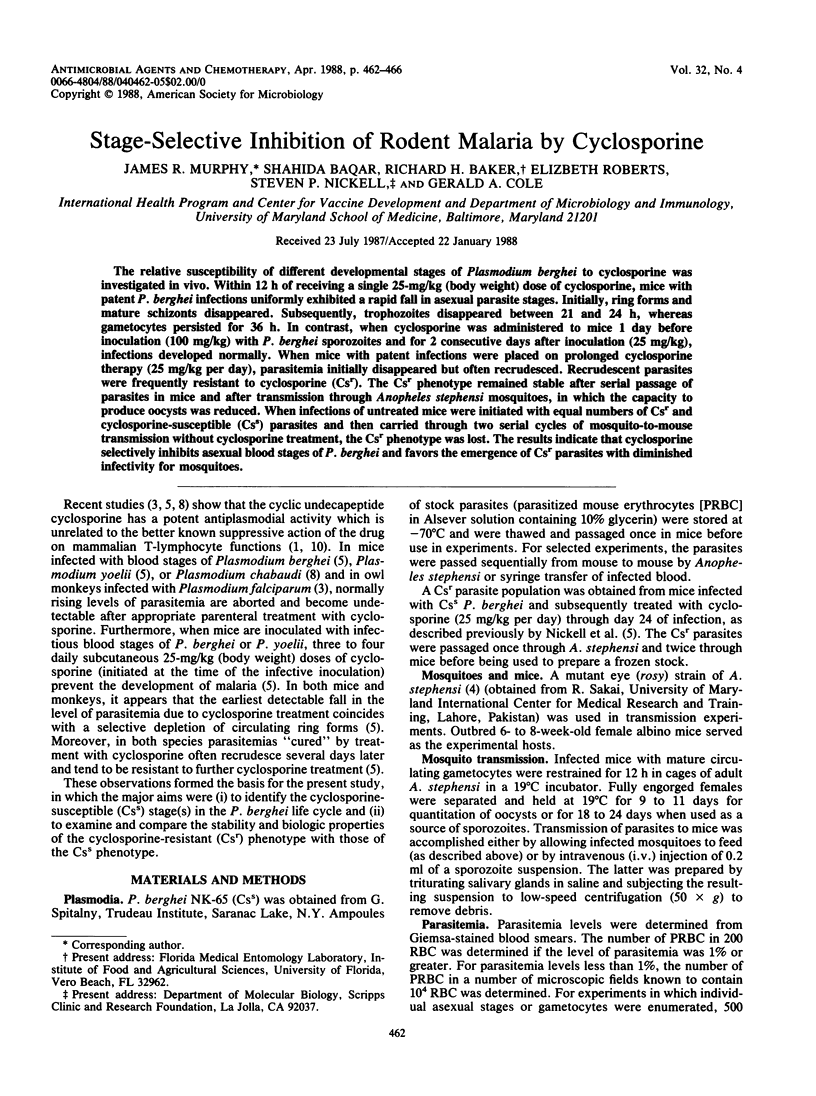
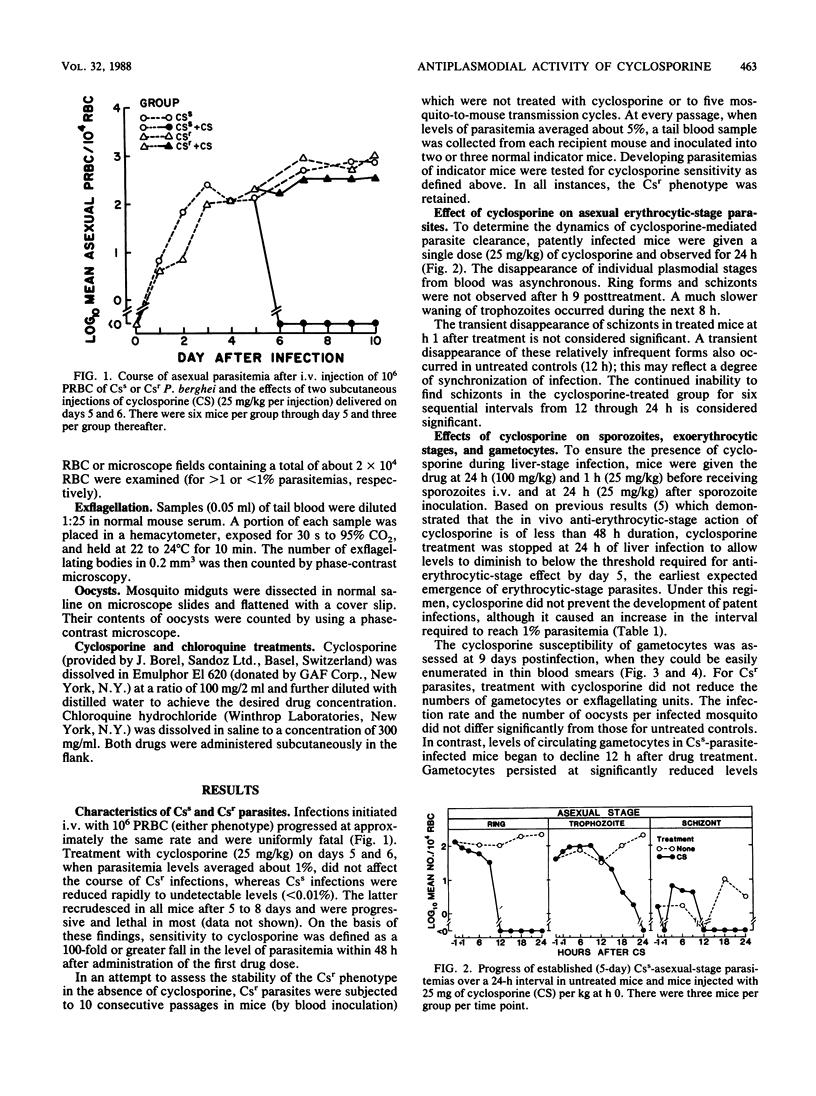
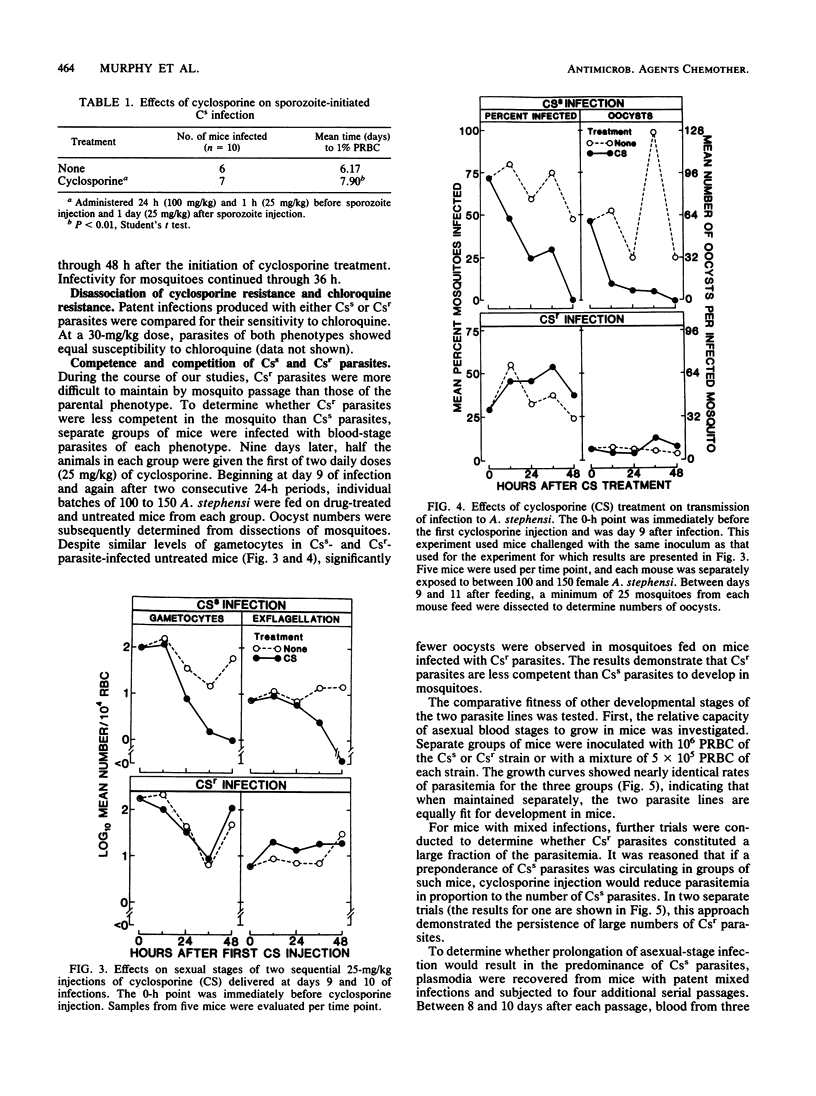
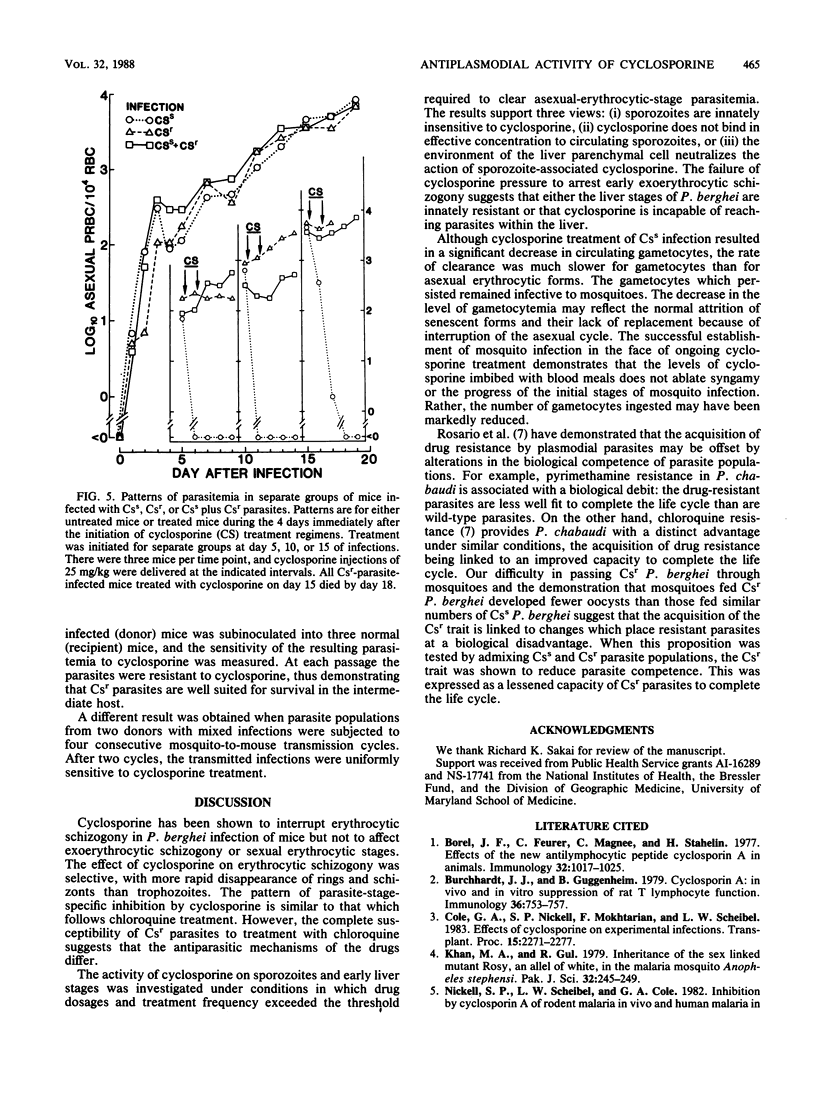
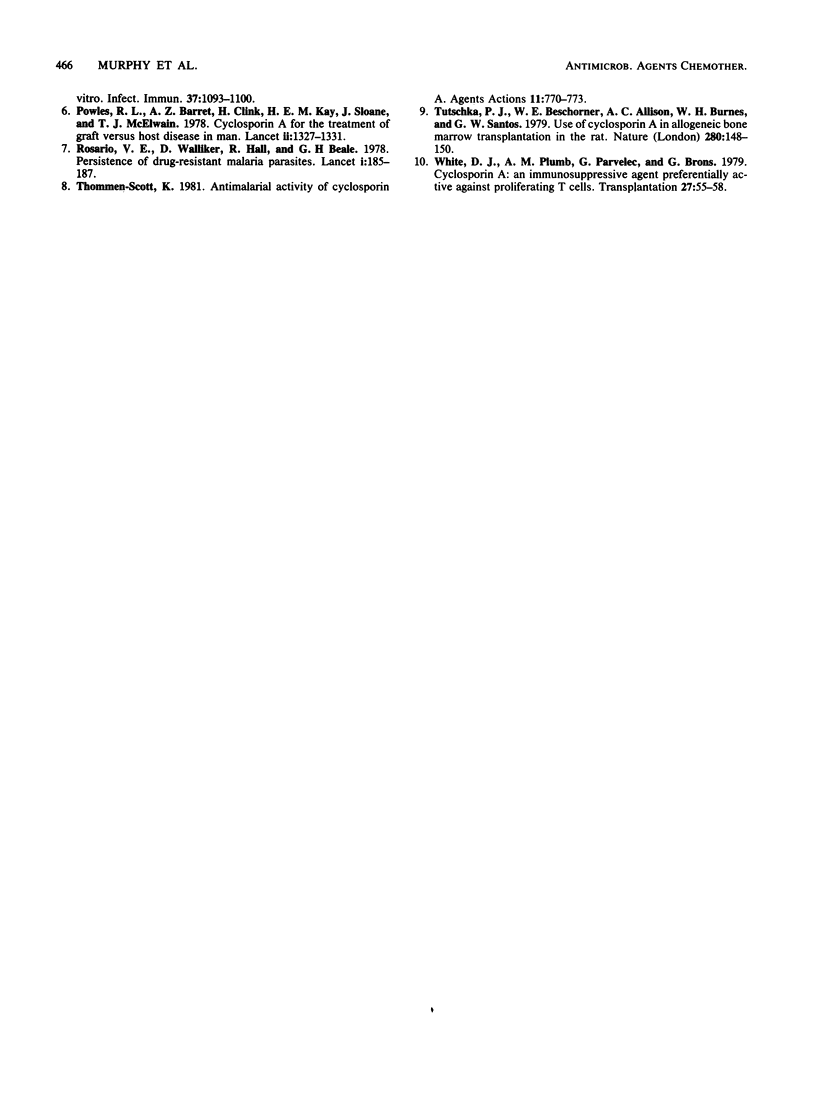
Selected References
These references are in PubMed. This may not be the complete list of references from this article.
- Borel J. F., Feurer C., Magnée C., Stähelin H. Effects of the new anti-lymphocytic peptide cyclosporin A in animals. Immunology. 1977 Jun;32(6):1017–1025. [PMC free article] [PubMed] [Google Scholar]
- Burckhardt J. J., Guggenheim B. Cyclosporin A: in vivo and in vitro suppression of rat T-lymphocyte function. Immunology. 1979 Apr;36(4):753–757. [PMC free article] [PubMed] [Google Scholar]
- Powles R. L., Barrett A. J., Clink H., Kay H. E., Sloane J., McElwain T. J. Cyclosporin A for the treatment of graft-versus-host disease in man. Lancet. 1978 Dec 23;2(8104-5):1327–1331. doi: 10.1016/s0140-6736(78)91971-2. [DOI] [PubMed] [Google Scholar]
- Rosario V. E., Hall R., Walliker D., Beale G. H. Persistence of drug-resistant malaria parasites. Lancet. 1978 Jan 28;1(8057):185–187. doi: 10.1016/s0140-6736(78)90616-5. [DOI] [PubMed] [Google Scholar]
- Thommen-Scott K. Antimalarial activity of cyclosporin A. Agents Actions. 1981 Dec;11(6-7):770–773. doi: 10.1007/BF01978803. [DOI] [PubMed] [Google Scholar]
- Tutschka P. J., Beschorner W. E., Allison A. C., Burns W. H., Santos G. W. Use of cyclosporin A in allogeneic bone marrow transplantation in the rat. Nature. 1979 Jul 12;280(5718):148–151. doi: 10.1038/280148a0. [DOI] [PubMed] [Google Scholar]
- White D. J., Plumb A. M., Pawelec G., Brons G. Cyclosporin A: an immunosuppressive agent preferentially active against proliferating T cells. Transplantation. 1979 Jan;27(1):55–58. [PubMed] [Google Scholar]


